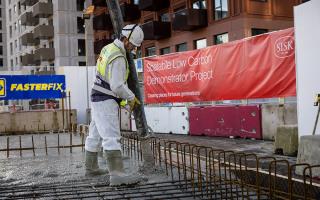While cement plants have made sound progress in terms of reducing CO2 emissions from fuel consumption, progress relating to such emissions from electricity consumption has been slower. VDZ looks at a key power consumer in the modern cement plant: the grinding section. By Jonas Knappert, Kevin Treiber and Stefan Seemann, VDZ, Germany.
Cement production is energy intensive in terms of fuel and electricity. Fuel energy consumption and corresponding CO2 emissions have been significantly reduced in recent years due to the improved energy efficiency of kilns, and higher substitution of fossil fuels by alternative fuels. However, electricity consumption is more difficult to optimise, in particular because more energy is required for additional environmental measures and a higher degree of automatisation of production processes. Most importantly, grinding still requires a significant amount of electrical energy and little progress has been reported in terms of improving its electrical energy consumption. In addition, there are high costs related to electrical energy and indirect CO2 emissions, which in the end have an additional cost impact for cement producers. Taking the German cement industry as an example, Figure 1 shows that grinding processes consume around 70 per cent of the total electric energy for raw material and cement comminution.1
